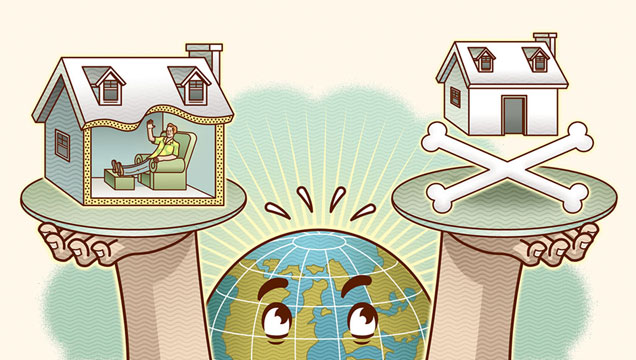sierraclub.org - sierra magazine - july/august 2011 - grapple: once you start down the dark path
None of Your Beeswax | Don't Sweat the Small Stuff | "Once You Start Down the Dark Path..." |
As the World Warms | Up to Speed
AS THE WORLD WARMS
Quick thinking before we slowly fry
Americans' understanding of climate science is declining just as climate change itself is accelerating. Feeling lucky that the problem is about communication, Google.org, the search engine's philanthropic wing, picked 21 climate researchers with a gift for gab to receive training in new media and data sharing. Edwin Maurer, a civil engineering professor at California's University of Santa Clara and one of the "Google Science Communication Fellows," says the training just might bridge the gap between "the consensus on global warming and the misunderstanding by a large fraction of the public."
Wind power is all the rage on land, but diesel engines rule the seas, generating about 4 percent of the world's greenhouse gases. Britain's largest wind farm operator, B9 Energy, plans to change that equation with renewably powered cargo ships, which will take to the seas in 2012. Propelled by self-adjusting sails and, when the wind dies, biogas backup engines, the freighters will be able to carry 3,000 tons of cargo. B9's initial target market is intra-European shipping, particularly in the breezy Baltic and North Seas.
The Empire State Building is now the King Kong of New York City renewables' purchasers: Its owners signed a deal with Green Mountain Energy to power the entire building with breeze-o-watts. The switch to wind power will eliminate nearly 100 million pounds of CO2 emissions each year—comparable to every household in New York State turning off its lights for a week. —Dashka Slater

Peter and Maria Hoey
ON THE ONE HAND . . .
Polystyrene insulation makes buildings very energy efficient-no small matter, given that heating and cooling them generates a third of North America's greenhouse-gas emissions. Ecofriendly builders like the stuff because, in addition to its thermal efficiency, it's sturdy, long lasting, and waterproof. Last year, the ecological-design firm McDonough Braungart Design Chemistry awarded its silver-level "Cradle to Cradle" certification to Dow's extruded polystyrene (XPS) insulation-i.e., Styrofoam-because of its insulating ability, strength, and "sustainable design."
ON THE OTHER . . .
Polystyrene insulation is highly flammable, so it's treated with flame retardants. But fire experts say the chemicals don't actually stop the insulation from burning. And when it does, highly toxic brominated dioxins are emitted. Another problem: Data released by Dow are consistent with the widespread belief that Styrofoam insulation is made with HFC-134a, a gas whose global-warming impact is 1,430 times worse than carbon dioxide's. Environmental Building News estimates it could take 65 years for the reduced energy consumption of an XPS-insulated home to balance out the climate effects of producing the insulation in the first place. —D.S.
Up to Speed